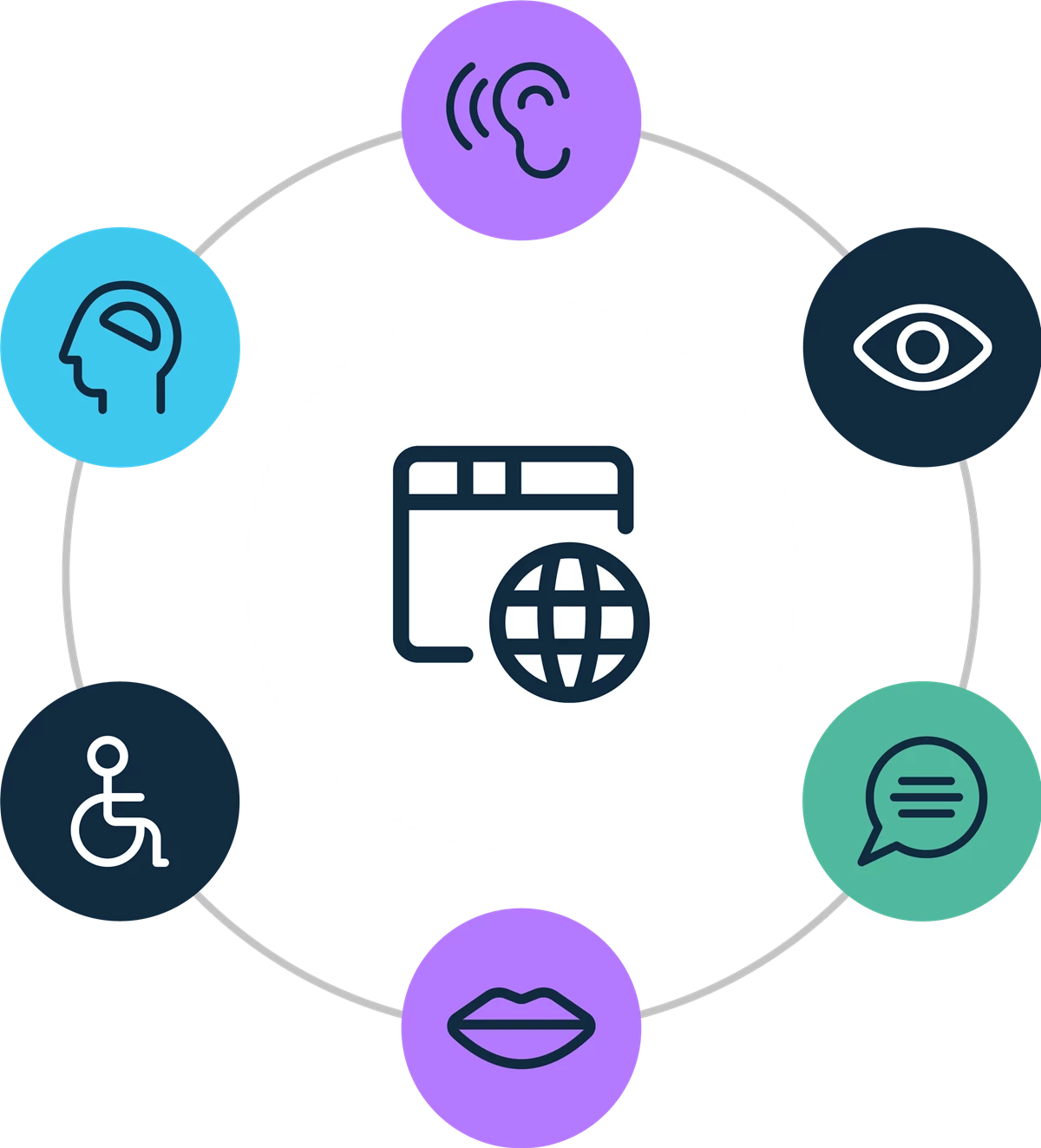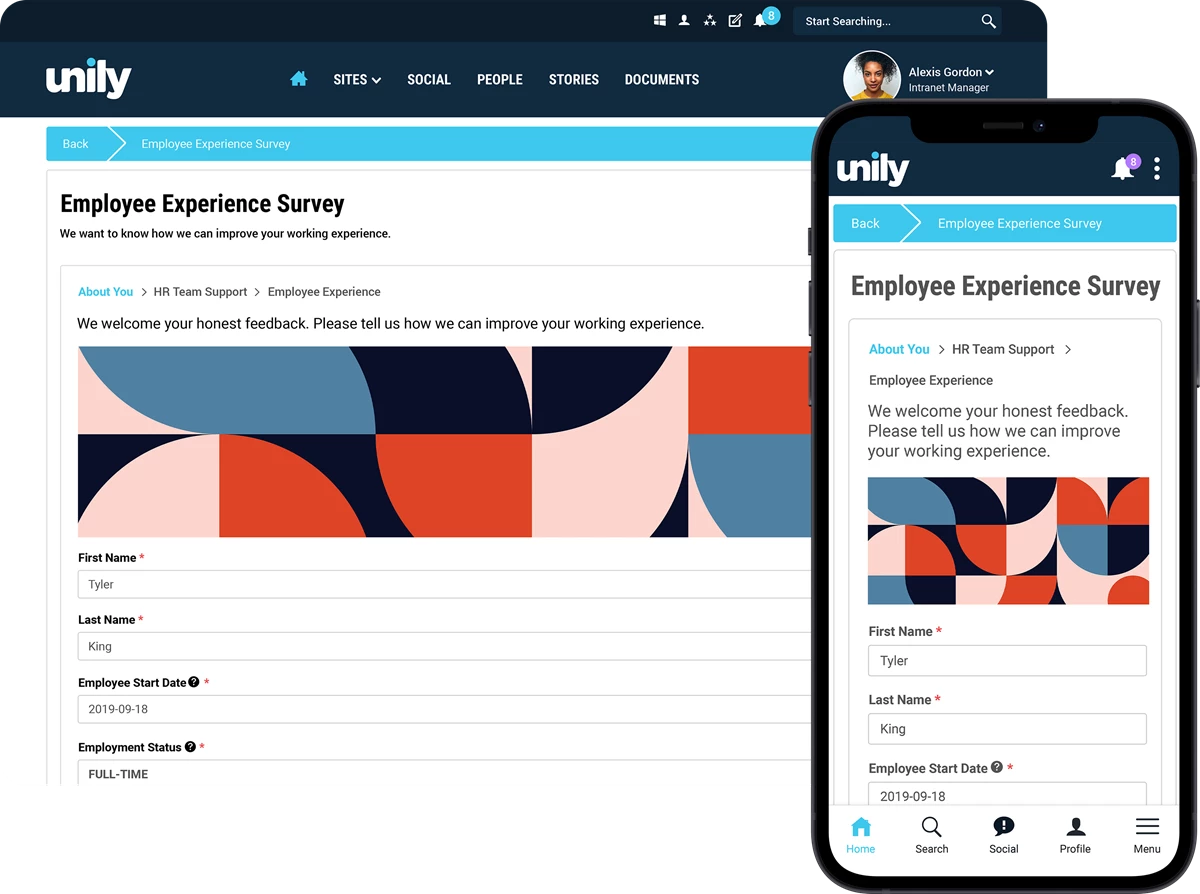Create a sense of community for all, from those on the frontline to office workers, by engaging remote employees and promoting a hybrid culture that showcases what your enterprise stands for. Harness the digital tools of an employee experience platform to open lines of communication across your enterprise. Reinforce company values in your hybrid workforce, wherever they are. Reduce feelings of isolation and create an employee culture of belonging with Unily, the experts in connecting your dispersed workforce.

"We wanted an enhanced intranet platform at Baker Hughes, which would improve our ability to communicate with our employees in real-time and in new ways. We have engaged Unily to help our employees navigate through change and drive results globally."
"Our intranet has a high degree of engagement and readership - we're really seeing our community come alive."
"Being well informed, collaborating, communicating with colleagues and effective search tools – these are central to our new intranet. "
Ensure your employees feel part of the conversation with a rich internal communications platform that encourages well-being for remote workers. Keep everyone informed and aligned with company strategy with multi-channel communications that reach all employees. Use push notifications to target employees on the go and send targeted newsletters with personalized information to boost content relevancy and engagement. Encourage employees to self-publish content that other employees can interact with, creating engaging communication opportunities and reduce feelings of seclusion.
Relying on a digital employee experience platform instead of in-person communication is immediately more accessible for all employees. Build a hybrid or remote culture of inclusivity that ensures all knowledge is accessible from a central location. Utilize AI-powered translation for different language speakers, auto-captioning for video content, easy-to-read fonts, keyboard navigation and compatibility with popular screen readers as standard, so no one is left out. Capitalize on the convenience of our user-centric design and functionality for all your employees without the need for exclusive separate experiences.
Provide employees with a centralized launchpad to critical business systems, allowing your workforce to access multiple applications from a single location. Intranet integrations ensure users can interact with tools without wasting time looking for them. Single sign-on capabilities streamline access, removing the need for storing a library of log-in credentials. Centralize knowledge with integrated document storage and intuitive search, making it a breeze for your employees to access essential, version-controlled, documents, reducing knowledge silos within teams.
Fuel a modern work culture of positivity by spotlighting internal ambassadors. Highlight employees that are steering your enterprise toward success and reward their achievements. Provide encouragement through blogs and social shout-outs. Lead by example to ensure employees become active on social channels, write blog content, and star in video content. Preserve the unique subcultures that help different departments thrive with dedicated spaces within the platform. Provide a centralized outlet for peers to connect, allowing for idea exchange.
Make virtual teamwork a reality with pre-built ideation hubs and user profile directories to ensure employees can easily search for collaborators. Spotlight those with niche expertise with in-platform badges and searchable people directories. Empower teamwork and knowledge-sharing through these native collaboration features, and offer a space for employees to refine best practices, discuss projects, celebrate successes, or simply share what's important to them; like recipes, workouts or ways to entertain the kids!
Provide outlets for employees to share their concerns. Avoid feelings of lacking agency in your remote workforce and support remote working mental health by sourcing feedback. Form capabilities ensure you can send out customized surveys measuring sentiment, allowing you to target recurring issues. Identify the specific challenges faced with transitioning to a hybrid or remote workplace.
Hybrid culture refers to how enterprises maintain a sense of community when employees are given flexibility in where they work. This dynamic model prioritizes work-life balance, boosts productivity, and can help reduce operational costs. However, its success relies on robust communication tools and inclusive policies to maintain seamless collaboration among team members, regardless of where they work. Embracing a hybrid or remote culture empowers employees, attracts diverse talent, and fosters an agile and forward-thinking organizational culture.
Remote and hybrid work are different, but similar, work models. Remote work refers to a setup where employees work entirely from outside the office, often from home or other remote locations. In contrast, hybrid work combines both office-based and remote work, offering employees the flexibility to work from the office and remotely, depending on their preferences and company policies. Hybrid work allows for a blend of in-person collaboration and remote work flexibility, while remote work is entirely location-independent.
A hybrid approach to remote work involves combining elements of traditional office-based work and remote work flexibility. In this model, employees can work from the office or remote locations, depending on their tasks and personal preferences.
Hybrid work strikes a balance between in-person collaboration and the advantages of remote work, such as promoting work-life balance, enhancing productivity, and accommodating diverse employee needs. Maintaining culture and remote employee experience in the hybrid workplace often requires companies to establish clear policies, provide the necessary technology and communication tools, and foster an inclusive work culture that supports both in-office and remote employees.
Effectively engaging remote employees involves several strategies. Creating a remote culture, or hybrid culture, is chief among them. Building a remote work culture is important to ensure clear and frequent communication can be achieved across various channels, creating a feeling of togetherness.
A modern intranet or employee experience platform, like Unily, can serve as a centralized hub for information sharing, updates, and employee collaboration. It may be used to encourage virtual team-building activities, provide employee recognition for achievements, and foster a sense of belonging through regular check-ins. Providing opportunities for career growth and upskilling will also help promote engagement and loyalty among remote team members.









